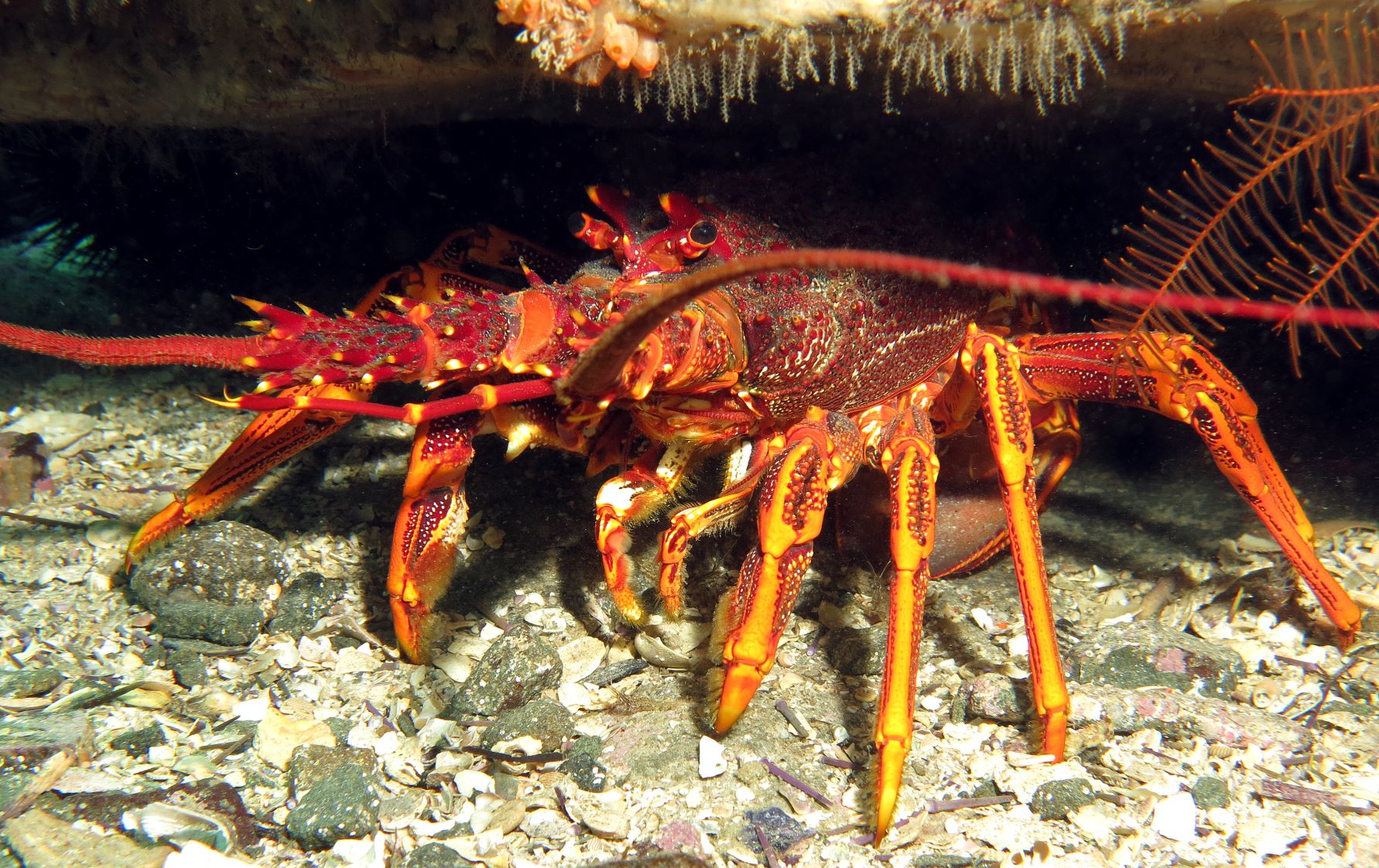Recreational Fishery
Estimated recreational catches increased in each survey from 1996 until 2002/2003 and have since decreased steadily to the lowest value in 2015/16 (63 tonnes). The recreational catch comes mainly from the East coast, especially from assessment area 1. The state-wide harvest has not exceeded the total allowable recreational catch (TARC) allocation of 170 tonnes in any year for which there is survey data. Estimated recreational catches since 2015-16 have equalled about half of the TARC level and were under 73 tonnes in the 2020/21 season.
Survey Methods
IMAS researchers have conducted fifteen surveys of the Tasmanian recreational rock lobster fishery between the 1995/1996 season and the 2020/21 season. Since 2015, these surveys have been conducted annually. The key objectives of recent surveys include characterisation of the rock lobster fishery in terms of participation, fishing effort and catch, with particular focus on the fishery off the east coast.
The methodology applied is based on that used successfully in previous surveys and independently reviewed by Pollock (2010). The design involves a two-stage process; an initial telephone interview to profile licence-holders and establish eligibility for a telephone-diary survey in which fishing activity is monitored in detail. Here we present an outline of the research methodology applied. For more detailed information related to the most recent fishing season please refer to the full report.
The latest report on the Tasmanian Recreational Rock Lobster and Abalone Fisheries can be found at the link below:
Survey Sample
For each survey a sample was selected from the recreational licensing database administered by the Department of Natural Resources and Environment (NR&E). The database of all persons holding a recreational rock lobster licence was divided into geographic regions. The sample was also weighted with a higher number of participants from the east coast, Launceston and north east coast being recruited to represent the higher level of fishing activity in those regions. For more information on the specific sample taken in a season, please refer to the full report.
Initial Survey
Respondents were contacted by telephone prior to the season commencing and asked about their fishing for rock lobster and abalone during the previous season (number of days fished and estimated retained catch for either species), and whether they expected to renew their fishing licences for the up-coming fishing season. Sampling was conducted without replacement, i.e. persons without a telephone listing or those who did not respond were not substituted in the sample.
Telephone-diary Survey
Respondents who indicated an intention to renew their licences in the initial survey were deemed eligible and were invited to participate in the diary survey. Those who accepted were mailed a simple diary and letter of introduction. Diarists were contacted by telephone shortly afterwards to confirm receipt of their survey kit and have reporting requirements explained. Diarists were then contacted regularly by telephone throughout the survey period by experienced interviewers who recorded details of any rock lobster and/or abalone fishing activity since last contact. The frequency of the contact was tailored to the needs and behaviour (level of fishing activity) of individual respondents and thus detailed information was routinely collected soon after each fishing event, minimising recall bias for non-diarised data. By maintaining regular contact, typically at least once a month, interviewers were also able to clarify any misunderstandings or inconsistencies at the time of the interview, thereby maximising overall data quality and completeness.
Information collected for each fishing activity or ‘event’ included the date, location, method used, target species for divers, start and finish times (including any significant breaks from fishing), and the numbers of lobster and/or abalone kept (harvested). In addition, the numbers of lobster released and reason(s) for release were recorded. Fishing locations were allocated into the eight areas used for lobster fishery assessment reporting.
Wash-up Survey
At the completion of the diary survey fully responding diarists aged 18 years and older were asked a series of questions relating to their fishing activity, perceptions relating to the quality of the fishery, and any potential impacts on their fishing activities, such the COVID-19 pandemic on the 2019/20 season.

Photo courtesy of Antonia Cooper, Reef Life Survey



